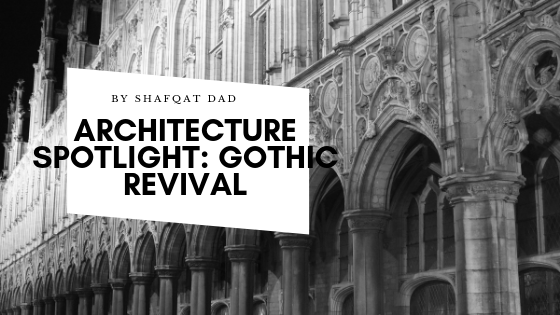Gothic Revival Architecture is a common style that is used in luxury buildings, homes, and hotels. It seeks to revive medieval Gothic Architecture, a movement which developed in 18th century England. Many of the original gothic buildings were cathedrals and churches and were large structures with ornate decorations and dramatic features.
Gothic Revival began in the western world in the early 19th century, and it primarily draws elements of the original gothic style, including lancet windows, hood molds, and decorative patterns. It takes and transforms these elements to better suit more modern buildings and to balance drama and subtlety.
One of the main features was the use of tall, buttressed columns and tall, narrow windows to mimic the shape of the structure in its entirety. Initially, this was because it was used mostly in religious structures, and was reaching up toward the sky. With the revival, the technological developments of the light bulb and steel frame changed the composition. It made fewer columns necessary and resulted in the buttresses being mostly decorative features instead of structural because the steel frame could support the building. Light bulbs, as well, changed the function of the windows, as the tall windows sought to catch the sun at every point of the day and illuminate the entire building.
Gothic Revival style architecture not only enraptured England but made its way all around the world as one of the most prominent styles of the 19th century. For instance, Strawberry Hill House in London has a variety of features attributed to Gothic Revival as does Trinity Church and St. Patrick’s Cathedral in New York City, as does the Cathedral of Santa Maria in Florence.
The style harkens back to a time that was different than ours in every way, socially, architecturally, technologically. When a person walks into a Gothic Revival building today, they are immediately displaced, thrown back into that era through the dramatic and striking architectural features.

